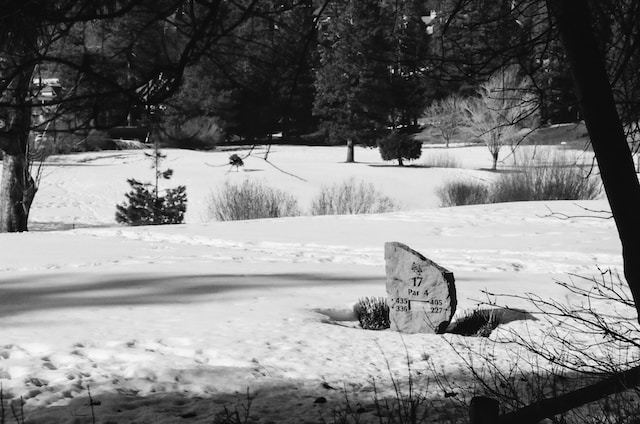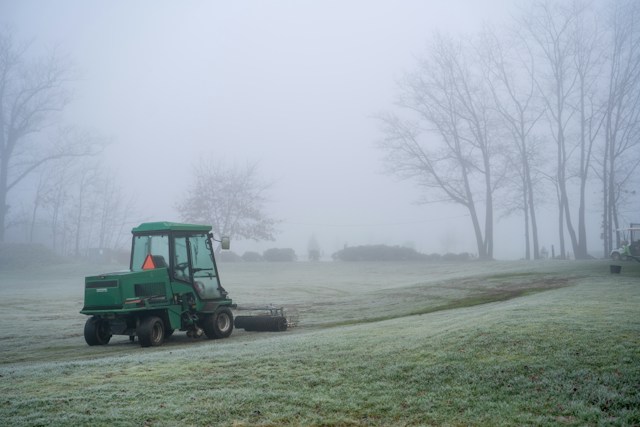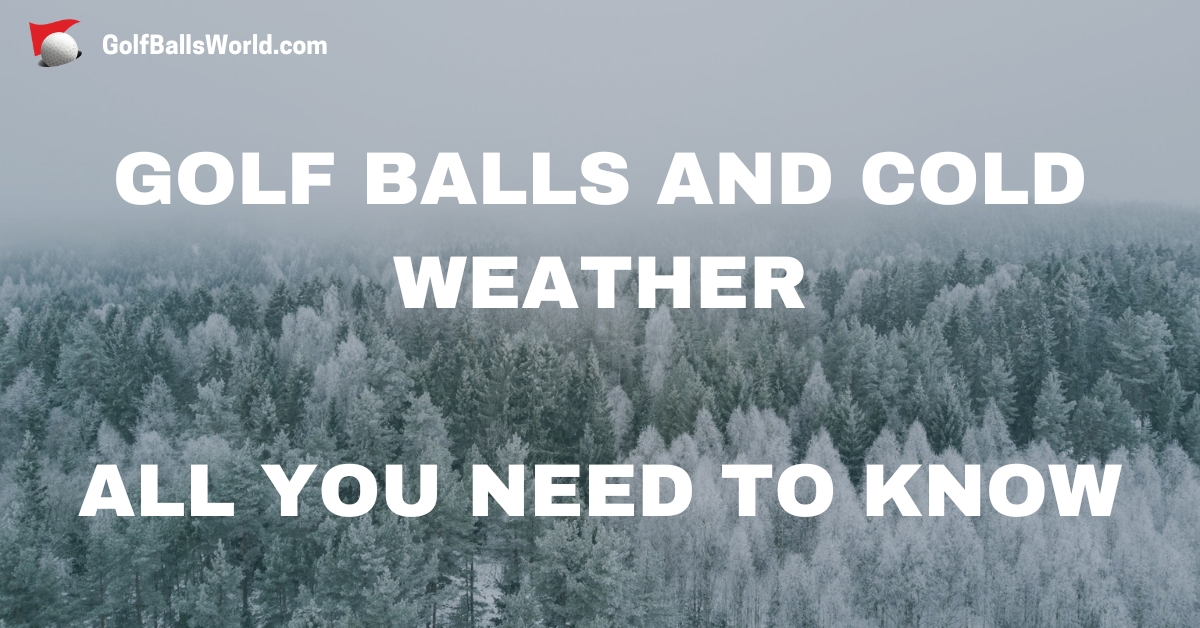When summer and hot temperatures fade away, golfing becomes different, and a bit more challenging. I have discovered personally that golf balls and cold weather don’t necessarily go hand in hand. But if you are a passionate golfer, no weather will stop you from playing.
When I started golfing it was summer, and I slowly saw some progress as time went by. But when colder weather came I went to square one. All of a sudden, even tho the distances were the same and the holes familiar, it felt like a completely different game. That was not just because of my inexperience, it was also something else.
It has a lot to do with physics. Hats down to everyone who knows the technicalities, and the formulas, and fully understands how temperatures and golf balls correlate. I will do my best to explain it in the best way possible.

When Does it Become Cold for a Golf Ball?
The air density is a major reason golf balls don’t perform the same in the winter months. To put it in scientific words when the temperature is higher, the molecules that make up the air move faster which means they create less air resistance toward objects. Then the air is less dense. When the temperature is lower, you guessed right, it has the opposite effect. The molecules move slower and create more resistance toward objects. Then the air is denser. That air resistance is also known as “drag”, the word often used when this subject is discussed.
Interestingly, pressure has the opposite effect on air density. The higher the altitude there is less pressure and therefore less air density. If you play on a golf course at higher altitudes, your balls will most likely go further.
According to several sources, the temperature for optimal golf ball performance is 70 to 90 degrees. This means at any temperature below 70 degrees the golf ball starts feeling cold. When that happens the golf ball won’t perform the same anymore, and you will notice that as you play. This is especially reflected in harder golf balls that are more compressed. Therefore, when cold they are harder to compress upon impact which leads to lost distance.
On the other hand, lower temperatures affect less the balls with lower compression, and therefore those balls go further in cold weather. These balls are easier to compress upon impact, which will lead to less lost distance in colder conditions.

How Much Distance You Lose in Cold Weather?
Here is a fact. Golf balls lose on average between 1 and 2 yards with every 10 degrees drop in the temperature. That goes from around a 2-yard loss per 10 degrees with the driver down to around a 1-yard loss with the pitching wedge. It also works the other way around, meaning a 1 to 2 yards gain per 10 degrees of warmer weather.
Prepare for a Round in Cold Weather
If you do decide to play golf in wintertime, just like I do, below are some tips on how to prepare for a round.
- Dress up warm – this is recommended for everyone getting ready to play in low temperatures. Multiple layers could be an obstacle when golfing, but it is necessary to be dressed up properly. Good base layers are essential, both top and bottom, thermal would be perfect but regular will do. Next are warm socks, and waterproof shoes since during winter time the grass will be wet or humid throughout the day most of the time. A nice warm pullover or sweater will do, with a pair of warm pants. If you are already dressed up with clothes that will keep you warm, you can put on a thinner jacket so it does not affect your swing too much. Winter golf gloves can be helpful if you feel too cold on your hands, and a nice beanie to top it off.
- Warm-up – before you start your round, a good few minutes of warm-up will help get your blood flowing and help your game as well. When your muscles are cold, you are most likely losing some additional distance when hitting the ball. Another benefit of warming up is injury prevention, so you can come back the following weekend.
- Keep the balls warm – a way of preventing your golf balls from getting ice-cold before you start playing is to keep them at room temperature. Instead of leaving them in your vehicle or your golf bag in the garage, keep the balls at home. That way your ball will lose a bit less distance than it would if cold.
- Club up – since the balls are reaching less distance, you can adjust by selecting a longer club. That would mean for example when you would usually use the 8 iron, use the 7 iron instead to compensate for the shorter reach.

Some Recommended Balls for Cold Weather
If you want to switch golf balls for the winter season, here are some recommended balls for cold weather:
- Bridgestone e6 – this 2-piece low-compression golf ball falls into the category of suitable cold-weather balls. It is designed to reach high ball speed during a moderate swing speed. Read the 2023 Bridgestone e6 golf ball review.
- Callaway Supersoft – provides a soft feel, low spin, durability, and fast ball speed. It is built to reduce drag, have a higher trajectory, and go longer distances. Read the 2023 Callaway Supersoft golf ball review.
- Titleist Pro V1 – one of the most popular golf balls out there offers a consistent flight while going longer distances, a softer feel, increased short-game control, and low long-game spin. If you are looking to go premium, this could be your ball of choice. Read the 2023 Titleist Pro V1 golf ball review.
Be Always Ready
Golf is fun to play no matter what season you get out on the course. If you are a golf enthusiast, there is nothing that will keep you away, but you should be always ready. There is one more option when it comes to ball choice, and that is to play with the same ball all year round. You know how it is going to perform. Try to keep it warm before you play, and it should still perform close to what you usually do.
Golfing is always about having a good time, but it is only natural that you want to keep consistent and try to get a better score every time you play. Now get ready and see you out there.
Do you golf in cold weather? What are your tactics? Share below!
Related:
- How High Altitude Affects Golf Balls – Golf Better
- How Humidity Affects Golf Ball Trajectory and Spin
- How to Control Golf Ball Flight Trajectory – Best Practices


Great article well explained. With colder weather coming, this will help make a few decisions.
Thank you, I am glad you find it helpful.